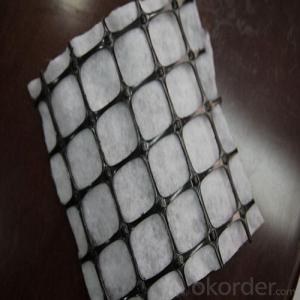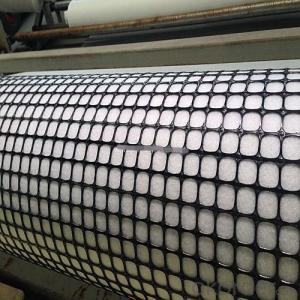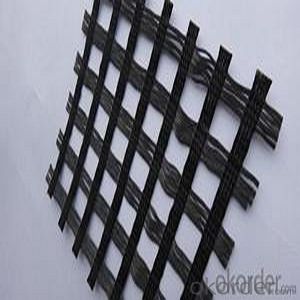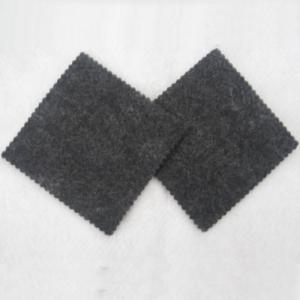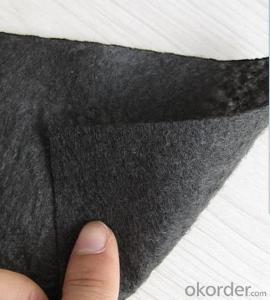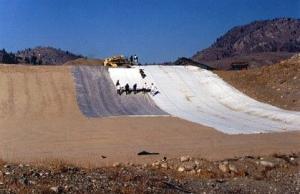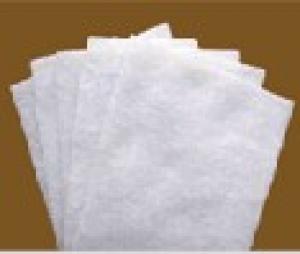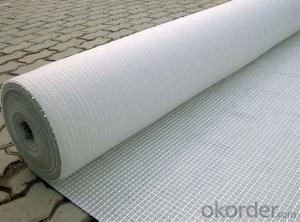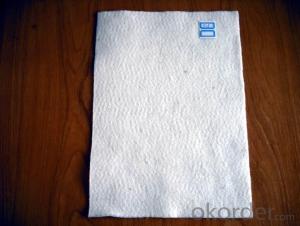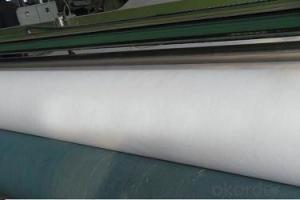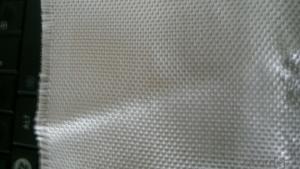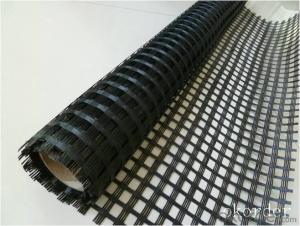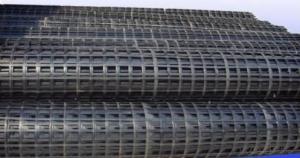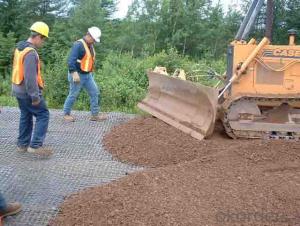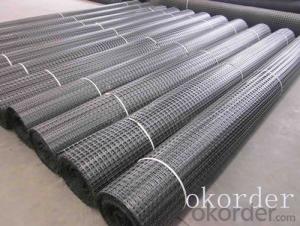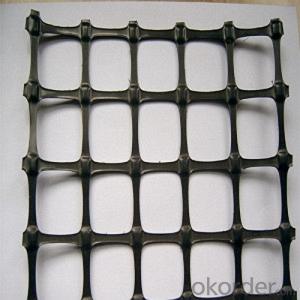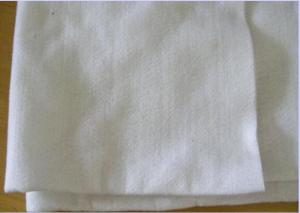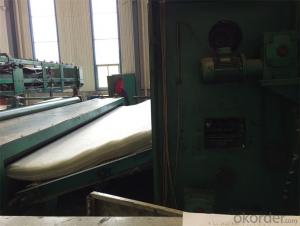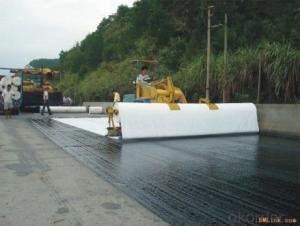Wf200 Biaxial Polypropylene Geogrid Geotextile for Dikes, Dams, and Tunnels
- Loading Port:
- China main port
- Payment Terms:
- TT OR LC
- Min Order Qty:
- 1000 m²
- Supply Capability:
- 1000000 m²/month
OKorder Service Pledge
OKorder Financial Service
You Might Also Like

Product Introduction
Geogrid protects channel slopes, provides resistance and stability, protecting this object from erosion. Additional advantage is drainage along channels. Geogrid application considerably reduces losses, connected with fall of ground, landslides and deformation of slopes.
In case of water streams construction, geogrid application allows planting trees and shrubs along the banks protecting them from ablation. Geogrids are an economical solution for filling water stream base and creates almost an ideal surface for laying down a water resistant layer.
We can produce pavement fiberglass geogrid of good quality with tensile strength of 30x30kn--300x300kn/m. mesh size can be 25.4x25.4mm or 12.7x12.7mm ,50.8x50.8mm.
Packaging & Shipping
Packing: PLASTIC FILM INSIDE, AND WOVEN BAG OUTSIDE
Shipping: About 15 days after receipt the deposit
geotextile fabric
permeability,filtration,easy for construction
ISO and CE certificate
Good quality and competitive price
After-sales service
1.In order to provide customers with comprehensive technical support,we will provide technical and other related information upon request in a timely manner.
2.In required,we will appoint specialized technicians to the construction site to give technical trainings to construction people,and offer technical guidance throughout the whole construction process.
3.For damage due to shipment and delivery,after we receive the complaint,we will check the issure through provided pictures and videos.If our responsibility is confirmed,we wil offer free replacement.
4.When the construction is completed,as your request,our technical staff may participate in the final acceptance.
FAQ:
Q: What kind of payments does jenor support?
A: T/T, L/C, Cash are accepted.
Q: Do you charge for the samples?
A: Accordeing to our company policy, the samples are free, we only charge the freight fee. And we will return the freight fee during the next order.
Q: Can you produce according to customers' design?
A: Sure, we are professional manufacturer, OEM and ODM are both welcome.
Q: Do you have other products?
A: Yes, please check the pictures:
- Q: What are the key properties of geotextiles?
- Geotextiles have several key properties that make them useful in various applications. These properties include high tensile strength, permeability, durability, and resistance to chemicals and UV radiation. They also offer excellent filtration and separation capabilities, allowing for effective drainage and soil stabilization. Geotextiles are lightweight and easy to handle, making them convenient for installation. Overall, these properties make geotextiles a versatile and reliable solution for erosion control, road construction, and other civil engineering projects.
- Q: Are geotextiles suitable for use in wetlands?
- Yes, geotextiles are suitable for use in wetlands. They are commonly used to stabilize soil, control erosion, and promote vegetation growth in wetland areas. Geotextiles can help retain moisture, filter water, and provide support to prevent soil movement. Additionally, they are often biodegradable or made from natural materials, making them environmentally friendly and suitable for use in wetland ecosystems.
- Q: Can geotextiles be used in mining tailings management?
- Yes, geotextiles can be used in mining tailings management. Geotextiles are commonly employed as part of a containment system to prevent the spread of contaminated tailings and to provide stability to the tailings impoundment. These textile materials can help separate and filter the solids from the liquid in tailings, reducing the risk of water pollution and improving the overall management of mining waste.
- Q: How do geotextiles contribute to soil improvement in soft ground areas?
- Geotextiles contribute to soil improvement in soft ground areas by providing reinforcement, stabilization, and separation functions. They act as a barrier between the soil layers, preventing mixing and promoting drainage. Geotextiles also distribute loads more evenly, reducing the risk of soil settlement and increasing the overall stability of the ground. Additionally, these materials can help control erosion by effectively retaining soil particles while allowing water to pass through, minimizing surface runoff and maintaining the integrity of the soil.
- Q: How to build a good 12 by 24 brick wall
- How to build a good 12 by 24 brick wall
- Q: Can geotextiles be used in riverbank stabilization applications?
- Yes, geotextiles can be used in riverbank stabilization applications. Geotextiles are commonly used to reinforce the soil and prevent erosion in riverbanks, helping to stabilize the slopes and prevent soil loss. They are effective in reducing water flow velocity, promoting vegetation growth, and providing long-term stability to the riverbank.
- Q: Geotextile business how to run
- Geotextile as a geotextile material, engineering applications have been very popular, the market competition is also very intense. Profits have been very low Bulk geotextile transactions are mainly ordered in the form of tender, so please pay attention to bidding information, I wish you success.
- Q: How are geotextiles used in drainage systems?
- Geotextiles are used in drainage systems as a filtration and separation layer. They prevent the migration of fine particles into the drainage system, while allowing water to pass through freely. This helps in maintaining the integrity and efficiency of the drainage system by preventing clogging and prolonging its lifespan.
- Q: Composite geotextile have what model specifications
- Composite geomembrane; mass per unit area g / m000 Membrane thickness mm0.25-0.350.3-0.5 breaking strength KN / m57.510.012.014.016.018.0 vertical and horizontal elongation at break% 30-100CBR breaking strength KN ≥ 1.11 . 51.92.22.52.83.0 Tearing strength KN≥0.150.250.320.40.480.560.62 Vertical and horizontal peel strength N / cm6 Vertical and horizontal permeability coefficient cm / sk * 10-11-10-13k = 1.0-9.9
- Q: What are the considerations for geotextile selection in coastal engineering projects?
- There are several important considerations for geotextile selection in coastal engineering projects. Firstly, the geotextile should possess high tensile strength and durability to withstand the harsh coastal environment, including waves, tides, and erosion. It should also have good permeability to allow for proper water drainage while preventing the loss of soil particles. Additionally, the geotextile should be resistant to UV degradation and chemical exposure, as well as be compatible with the surrounding soil and other materials used in the project. Lastly, factors such as installation ease, cost-effectiveness, and the specific requirements of the project should also be taken into account when selecting the appropriate geotextile for coastal engineering projects.
Send your message to us
Wf200 Biaxial Polypropylene Geogrid Geotextile for Dikes, Dams, and Tunnels
- Loading Port:
- China main port
- Payment Terms:
- TT OR LC
- Min Order Qty:
- 1000 m²
- Supply Capability:
- 1000000 m²/month
OKorder Service Pledge
OKorder Financial Service
Similar products
Hot products
Hot Searches
Related keywords
